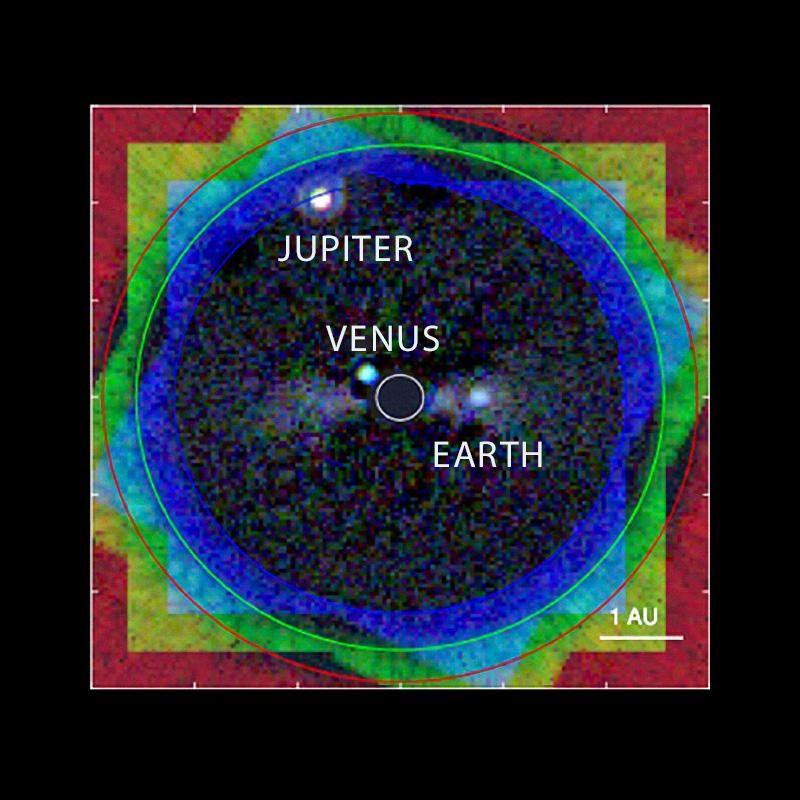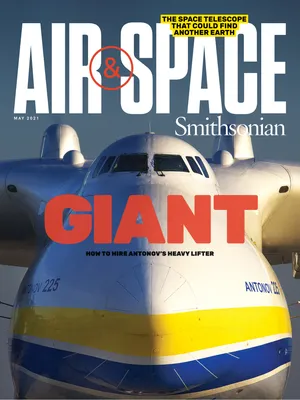The Space Telescope That Could Find a Second Earth
What will it take to capture images of a distant world capable of harboring life?
/https://tf-cmsv2-smithsonianmag-media.s3.amazonaws.com/filer/51/36/513650b4-7058-44ad-915a-a00cfdc92f0f/11f_am2021_exoplanetorbitingbrowndwarf_live.jpg)
For all the excitement surrounding the search for distant exoplanets in recent years, the 4,000-plus planets confirmed so far have been unseen actors on the cosmic stage. Except for a handful of very large bodies imaged by ground-based telescopes, virtually all exoplanets have been detected only when they briefly dim the light coming from their host stars or when their gravity causes the star to wobble in a distinctive way. Observing these patterns and using a few other methods, scientists can determine an exoplanet’s orbit, radius, mass, and sometimes density—but not much else. The planets remain, in the words of one researcher in the field, “small black shadows.”
Scientists want much more. They’d like to know in detail the chemical makeup of the planets’ atmospheres, whether liquid water might be present on their surfaces, and, ultimately, whether these worlds might be hospitable to life.
Answering those questions will require space telescopes that don’t yet exist. To determine what kinds of telescopes, NASA commissioned two major studies that have taken large teams of (mostly volunteer) scientists and engineers four years to complete. The results are now under review by the National Academy of Sciences, as part of its Decadal Survey for Astronomy and Astrophysics that will recommend government funding priorities for the 2030s. Past and current NASA mega-projects, from the Hubble Space Telescope launched in 1990 to the James Webb Space Telescope, which is scheduled for launch this year, have all gone through this same vetting process. Sometime this spring, the Decadal Survey is expected to wrap up its deliberations and make recommendations.
That puts four proposals in the running to become NASA’s next “Great Observatory” in space: an X-ray telescope called Lynx; the Origins Space Telescope for studying the early universe; and two telescopes devoted mostly, but not exclusively, to exoplanets. One is called HabEx, for Habitable Exoplanet Observatory. The other—the most ambitious, most complex, most expensive, and most revolutionary of all these concepts—is called LUVOIR, for Large UV/Optical/IR Surveyor.
If scientists really want to find out if life exists on distant Earth-like planets, they’ll eventually need LUVOIR—or something very much like it.
The LUVOIR concept study (published in 2019 as an illustrated, 426-page report) calls for a massive telescope mirror as big as 15 meters, almost 50 feet, in diameter. That would be six times larger than the Hubble Space Telescope mirror and more than twice the size of the 6.5-meter Webb telescope. The most ambitious version of LUVOIR would have a mirror as big as a carnival Ferris wheel.
The observatory’s foremost goal, as described in the study report, is to supercharge the hunt for small, faint, Earth-like exoplanets orbiting sun-like stars, in the hope that some of these might be able to harbor life. No world of that size and type has been directly imaged by a telescope, and doing so will require a very large light-collecting “bucket” placed beyond Earth’s obscuring atmosphere.
Direct imaging of such a faint target also requires certain technical innovations, most critically a powerful coronagraph—a screen to block out the blinding light of the planet’s host star. Inside the coronagraph instrument, an advanced imaging camera is needed to detect small, rocky planets like our own. Then a highly sensitive spectrograph is required to identify elements like oxygen or methane in a planet’s atmosphere that might suggest the presence of life.
The LUVOIR study team concluded in its final report that the deluxe version of the observatory—as opposed to a scaled-down option that reduces the mirror size almost by half—could identify and study 54 potentially Earth-like planets over a five-year observing period, along with hundreds of larger planets.
This estimate comes from matching the telescope’s technical specifications against the number of small, rocky exoplanets predicted to exist in our celestial neighborhood based on data from NASA’s Kepler survey mission of the last decade. Key to reaching the 54-planet goal will be LUVOIR’s internal coronagraph and the large size of the telescope itself, which has 40 times the light-gathering power of Hubble and can capture images much more quickly.
In one significant way, LUVOIR is a throwback to Hubble. NASA’s two large space observatories planned for the 2020s, Webb and the multipurpose Nancy Grace Roman Space Telescope, see primarily in the infrared. LUVOIR, like Hubble, will be sensitive in a broader range of wavelengths, from ultraviolet and visible light to near-infrared. That allows it to see the spectral fingerprints of a wide array of molecules that could suggest biological processes at work on a distant world.
First, though, the project has to be approved.
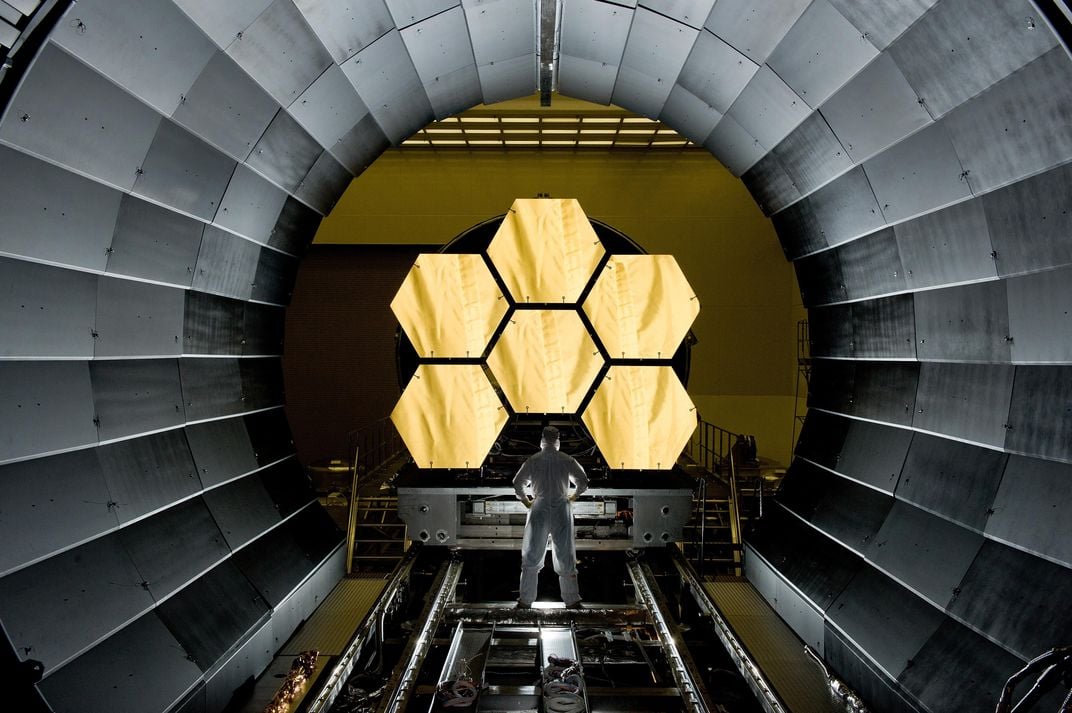
Pale Distant Dots
Had LUVOIR been proposed a decade ago, it would have been something of a fishing expedition. Today scientists are much more confident it will produce solid results. “What’s new and exciting is that, for the first time, we have major proposals to the Decadal [Survey] in the context of knowing for sure that there are Earth-size planets that get Earth-type energy from their suns in our relatively near neighborhood,” says Shawn Domagal-Goldman, a NASA astrobiologist who is the deputy study scientist for LUVOIR. “This is the first generation of concepts to incorporate that understanding and make it a central part of their science case.”
HabEx, the other exoplanet observatory under consideration for future funding, also would have the ability to directly image small, Earth-like planets. But its four-meter mirror would detect far fewer of them. Compared with the 54 exoplanets expected to be found by LUVOIR, HabEx is predicted to find eight over five years.

In terms of spatial resolution—the ability to see detail—LUVOIR can return images six times sharper than Hubble and four times sharper than HabEx. As a result, it could provide images much like the famous “Pale Blue Dot” picture of Earth taken by Voyager 1 in 1990 from a distance of 3.7 billion miles, but for planets that are 100,000 times further away. The planets will cover only a few pixels in these images, which may not sound like much. But the color of those precious few pixels contains a surprising amount of information.
“When you compare the planet brightness in two wavelengths, you get a color. That’s basically how your eye works,” says Aki Roberge, LUVOIR study scientist and an astrophysicist at NASA’s Goddard Space Flight Center. “So when we say we’ll measure the colors of planets, we really do mean the reflected blue, green, red that you could see with your eyes. In addition, we’ll measure colors outside of the range of light your eye can see.”
The planets will be “unresolved” in LUVOIR images, Roberge cautions. With only a few pixels total, they’ll still appear as fuzzy dots without surface features. “However,” she says, “there are ways to pull out information on surface features without actually resolving the planet. For most habitable planet candidates, we’ll be able to see their brightness vary as they rotate and find the lengths of the planets’ days. And if you look at the variation in more than one wavelength, you can probably decompose the variation into total fractions of land, oceans, and clouds. Seeing seasonal changes in planet brightness or color is probably possible too.”
Scientists will be able to read the contents of exoplanet atmospheres as never before with the Extreme Coronagraph for Living Planetary Systems (ECLIPS), which will be able to detect compounds such as oxygen, ozone, water vapor, carbon dioxide, and methane that could be biosignatures. Neither Hubble nor JWST can do that for Earth-like planets orbiting sun-like stars, so LUVOIR represents an important new capability for astrobiology.
The telescope would view exoplanets not just as isolated worlds but as members of distant solar systems, says Courtney Dressing, an assistant professor of astronomy at the University of California, Berkeley and a member of the LUVOIR concept team. “We would actually have the opportunity to determine the atmospheric compositions of multiple planets in a solar system—with their orbits and masses and temperatures known—and to do that for planets orbiting a variety of suns,” she says.
That diversity may be key to understanding planetary habitability, she believes. “Let’s say we look at a bunch of planets we assume to be similar—maybe five rocky planets that are the same Earth size and same temperature—and we see very different atmospheres. This tells us a lot more than by looking at one planet alone.”
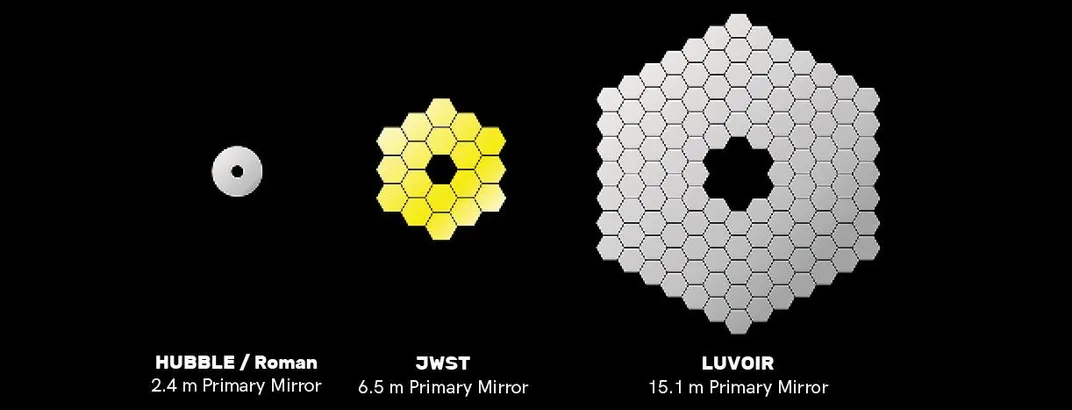
Although exoplanet science would be a driving purpose for the observatory, with its huge mirror and broad range of wavelengths it could also be used to study everything from distant galaxies to objects in our own solar system. For example, LUVOIR would see Jupiter with nearly the same detail as cameras onboard the Juno spacecraft currently in orbit around that planet.
“LUVOIR would make possible absolutely transformative science in so many ways,” says John O’Meara, chief scientist of the Keck Observatory in Hawaii and a member of the science team that developed the LUVOIR concept. It was O’Meara who gave the final, summary talk to the Decadal Survey panel that will prioritize science goals for NASA’s next Flagship space observatory. Significantly, his own research doesn’t involve exoplanets. “What we’re trying to do with LUVOIR is create an observatory that can tell the story of the universe from its earliest formation to the widespread presence—or absence—of life. So we like to say that LUVOIR is a notion or an idea, and not a collection of numbers that will be generated.”
Size A or Size B?
The idea of a very large space telescope that can see across many wavelengths has been discussed and even proposed to NASA for almost two decades. But the technology needed to fold up a large, segmented mirror and to build a high-performance coronagraph was lacking until recently, as was the science behind detecting and recognizing biosignatures. The Webb telescope, which will finally reach the launch pad this fall, pioneered the folding technology. The Roman telescope of the mid-2020s will fly the first advanced coronagraph in space as a technology demonstration.
Those projects, if successful, give LUVOIR a technical head start. But considering its ambitions, the observatory will be expensive, with lifetime cost estimates of $18 billion to $24 billion for the preferred 15.1-meter LUVOIR-A version. To avoid sticker shock, the LUVOIR team has worked up fallback plans for an eight-meter version called LUVOIR-B, which would cost $12 billion to $18 billion. (The smaller HabEx comes in at $9 billion.)
Either version of LUVOIR presents NASA with a big bill, but team members point out that it’s comparable to what the Hubble Space Telescope cost over its lifetime. The difference in capability between the 15.1-meter LUVOIR-A and the eight-meter LUVOIR-B roughly matches their difference in size. While LUVOIR-A could identify 54 “habitable planet candidates,” LUVOIR-B would get 28.
That difference has major scientific implications. The larger the number of habitable planet candidates studied, the better we’ll determine whether our own planet is common or rare, while increasing the chances of finding extraterrestrial life. This is a major reason why LUVOIR-A’s ability to find so many small, faint exoplanets has such appeal. Still, it would surprise no one if Congress and NASA—should LUVOIR get the nod—were to decide on the economy version.
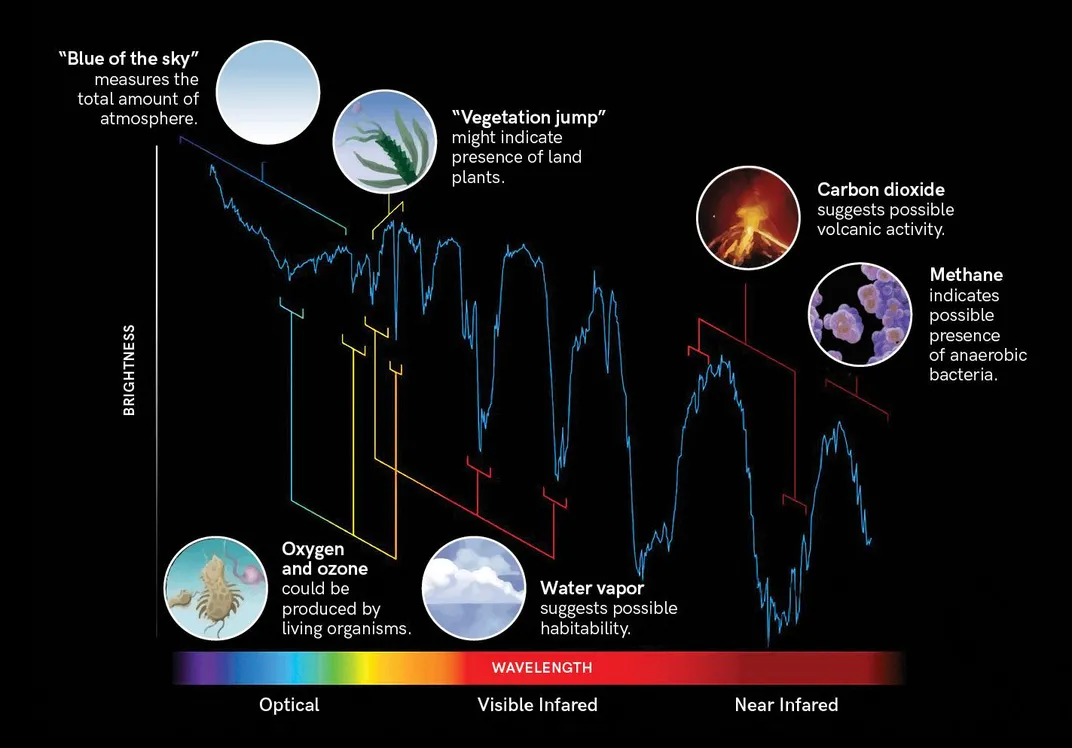
For now, LUVOIR-A is about the biggest space telescope we can build. Its 15.1-meter mirror is the maximum size able to fit inside the next generation of heavy-lift rockets, whether it’s NASA’s Space Launch System or the SpaceX Starship. Folded up inside the rocket at launch, the observatory would be sent out into cold, dark space, away from Earth’s warmth and brightness, to a gravitationally stable spot called Lagrange Point 2.
The notion of sending up LUVOIR-A in pieces, to be assembled later in space, has been presented to the Decadal Survey, although the panel traditionally makes recommendations based on science return rather than how a project should be executed. With in-space assembly, NASA could in theory put together a mirror larger—maybe much larger—than 15 meters. Back in the mid-2010s, then-NASA science chief (and three-time Hubble repairman) John Grunsfeld proposed that astronauts working in deep space could reasonably do the job. NASA commissioned a study of in-space assembly of large observatories in 2018, but the conclusion was that Grunsfeld’s astronaut construction crew was not feasible now and that robotic assembly would be better.
Nick Siegler, chief technologist for NASA’s Exoplanet Exploration Program at the Jet Propulsion Laboratory and a leader of the in-space assembly study, said its 2019 report concluded that in-space assembly will be necessary as observatories get ever larger. It would even lower mission risk. Complex, autonomous self-deployments would no longer be necessary, and since the pieces go up on different rockets, the possibility of one failed launch killing the entire project is eliminated. Siegler says in-space assembly by robots could cost about as much as a single launch in a heavy-lift rocket, possibly less if you factor in servicing. The in-space assembly team has sent a white paper to the Decadal Survey panel, in case LUVOIR gets its stamp of approval.
What are the odds of that happening? No one can say, but the HabEx and LUVOIR teams agree on one thing: They don’t want to shoot the other project down just to come out on top. “As members of the LUVOIR team we’ve definitely been advocating for our concept,” says LUVOIR community co-chair Debra Fischer of Yale University, who has been working in exoplanet science for more than 20 years. “But the goal here is to get a big project—hopefully one with a focus on exoplanets—up and running. I think most of us would be excited to see any of the study projects go forward.”
The LUVOIR study group, made up of more than 100 scientists and engineers, has strong ties with NASA’s Goddard Space Flight Center in the Maryland suburbs of Washington, D.C. A small team from Goddard, led by study scientist Roberge and deputy Domagal-Goldman, was supported by another two dozen “voting members” and a larger group of volunteers from around the world.
The amount of work that went into the study is unprecedented, Roberge says. That’s due in part to the many delays and cost overruns suffered by the Webb telescope project. To avoid running into the same problems, the LUVOIR (and other concept) teams took a much closer look at their own science, technology, and money requirements.
For more than four years, the LUVOIR team held almost weekly remote meetings, with sub-groups breaking out to tackle specific issues. Courtney Dressing figures that the LUVOIR work, which was unpaid except for travel expenses, took up five to 10 hours of her time every week.
She, Roberge, and the rest are hoping, of course, that all that time was worth it and that they’ll be rewarded with the Decadal Survey’s official blessing. “LUVOIR’s goal is to determine if there are other Earths,” Roberge says. “People have tried to get at this in other ways, but we strongly believe this has the highest probability of working. If LUVOIR is not recommended now, another LUVOIR concept will have to be selected in the future—if we really want to know if life is common or very rare in the cosmos.”



